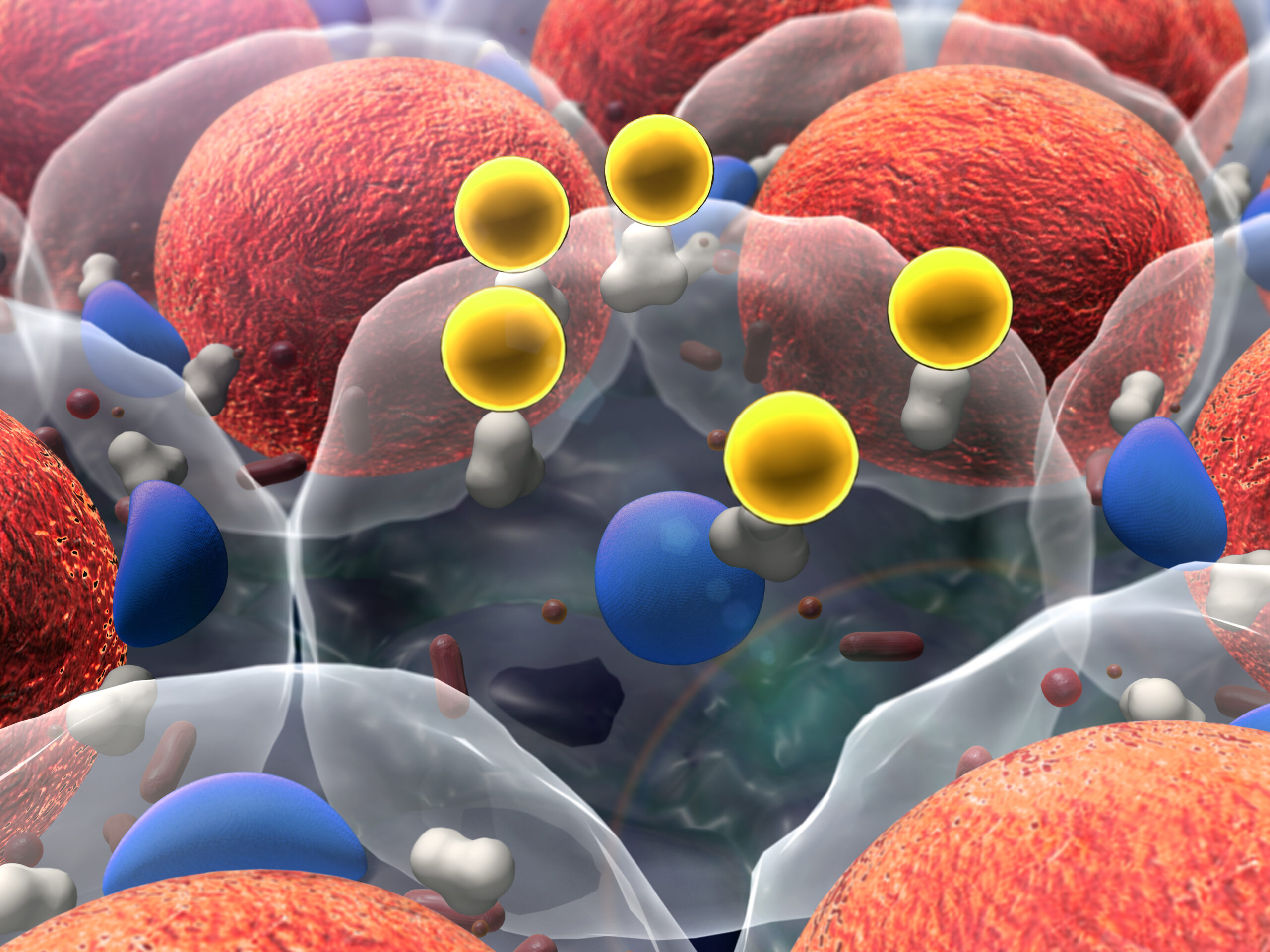Individuals with type 2 diabetes (T2D) are at increased risk for heart failure (HF) but, until recently, this topic has not received the attention it deserves; studies on the cardiovascular (CV) risks of T2D have focussed primarily on atherosclerosis and myocardial infarction (‘the pipes’). However, the growing health and socioeconomic burden of HF (‘the pump’) is now being recognised,1 and the relationship between T2D and HF is understood as been a bidirectional one, that is, the presence of either condition increases the prevalence and worsens the prognosis of the other. Patients with HF have a four-fold higher prevalence of T2D than patients without HF,2 while the risk of developing HF in patients with T2D is two-and-a-half times greater than in patients without diabetes.3 Despite these known risks, HF remains underdiagnosed in patients with T2D. In addition, some glucose-lowering agents increase the incidence of HF in patients with T2D.4
Albuminuria and cardiovascular event risk
It is known that urinary albumin excretion is increased in newly-diagnosed hyperglycaemic patients,5 and that albuminuria has a strong association with CV morbidity and mortality in patients with T2D.6 Albuminuria is a sign of persistent dysfunction of the glomerular barrier and is an early indicator of a decline in renal filtration function.7 Not only is albuminuria a sign of glomerular barrier dysfunction, it is a marker of endothelial dysfunction. A 2002 study involving over 40,000 individuals found that a two-fold increase in urinary albumin to creatinine ratio (UACR) was associated with a 30% increase in risk for CV mortality.7 In the BENEDICT study (NCT00235014), 1,208 hypertensive patients with T2D and normal albuminuria levels at baseline were followed for a median 9.2 years. Albuminuria was an independent predictor of CV events and even albuminuria at 1–2 μg/min was significantly associated with increased risk of CV events, compared with albuminuria <1 μg/min.8 In particular, an association has been found between albuminuria and HF.9 In the Cardiovascular Research Network PRESERVE cohort study, which involved 24,341 patients, UACR was found to be an independent predictor of hospitalisation and mortality in HF patients, conferring a 40–80% increase in relative risk.9 Moreover, the presence of any (protein) albumin in the urine, even if within the normal range, has been associated with worse outcomes in HF.9 Serum uric acid levels have been positively associated with albuminuria.10 In addition, uric acid appears to play a causative role in the pathogenesis of insulin resistance through its effects on nitric oxide synthesis within the vascular epithelium,11 as well as inducing endothelial dysfunction by activating the HMGB1/receptor for advanced glycation end-products (RAGE) signalling pathway.12
Detection and monitoring
Most guidelines recommended that the UACR test should be performed annually to detect the early signs of kidney disease in patients with T2D.13 However, monitoring of albumin has been found to be suboptimal, with up to 25% of patients not receiving annual tests.14
The effect of antidiabetic drugs on cardiovascular outcomes
Antidiabetic drugs are starting to show reduced risks of HF, and this discovery has increased the focus on HF as a clinical endpoint in CV outcome trials. The EMPA-REG OUTCOME study (NCT01131676) was the first study to show a significant reduction of a primary CV endpoint with a glucose-lowering agent, the sodium-glucose co-transporter-2 (SGLT2) inhibitor empagliflozin. A noteworthy and unexpected finding of this study was that empagliflozin reduced the HF hospitalisation by 35% compared with placebo. Other HF outcomes were also reduced including investigator-reported HF and death from HF.15 This effect seems to be common to all SGLT2 inhibitors; a systematic review and meta-analysis of randomised, placebo-controlled, CV outcome trials of SGLT2 inhibitors in patients with T2D found a 23% reduced risk of CV death or hospitalisation for HF.16
As with other CV outcome trials, EMPA-REG OUTCOME was not designed to determine the mechanisms underlying its results. A number of potential mechanisms have proposed, including haemodynamic changes related to plasma volume reduction and changes in renal sodium and glucose handling.17 In an analysis of renal outcomes of the EMPA-REG OUTCOME study, empagliflozin was found to reduce albuminuria in patients with T2D, irrespective of albuminuria status at baseline.18 SGLT2 inhibitors also increase renal uric acid elimination, which may contribute towards its cardio-renal effects.19 While analysis of the EMPA-REG data has not identified a mechanistic link between UACR and HF outcomes, it is an area that merits further investigation.
Albuminuria as a therapeutic target in type 2 diabetes
Albuminuria is increasingly becoming recognised as a potential therapeutic target in T2D. A post hoc analysis of 23,480 patients with albuminuria and atherosclerotic vascular disease or T2D found that halving urinary albumin excretion over a 2-year interval predicted a 15% reduction in mortality risk during the subsequent 3 years, whereas doubling of urinary albumin excretion was followed by a 30% increase in CV events, a 40% increase in renal events, and a 50% increase in mortality during the same observation period.20 In addition, a UK cohort study of 11,074 patients with insulin-treated T2D and nephropathy found that a reduction in albuminuria, achieved through improvements in blood pressure or glycaemic control, is associated with a significant reduction in all-cause mortality.21
Antihypertensive drugs including angiotensin-converting enzyme (ACE) inhibitors or angiotensin II receptor blockers (ARBs) are known to be associated with substantial reductions of ∼50% in albuminuria, although there is considerable variability in response to treatment.22 The aldosterone antagonist is known to be a beneficial treatment to reduce albuminuria in T2D patients with nephropathy.23 The recent TOPCAT study in HF patients (NCT00094302) found that spironolactone significantly reduced albuminuria compared with placebo, and that reducing albuminuria was independently associated with improved outcomes. In this study, increasing UACR was also associated with T2D.24
Summary
Until recently, HF has not been considered an important clinical outcome in patients with T2D. Albuminuria should be considered not only as an important risk marker but also an important therapeutic target for the prevention of HF in patients with T2D. The results of UACR tests should be considered during therapeutic decision-making in all patients with T2D. SGLT2 inhibitors appear to be an attractive treatment option for patients with T2D and albuminuria.
Support: No funding was received in the publication of this Insight article.
Published: 25 October 2019
References
- Farmakis D, Stafylas P, Giamouzis G, et al. The medical and socioeconomic burden of heart failure: A comparative delineation with cancer. Int J Cardiol. 2016;203:279–81.
- Lombardi C, Spigoni V, Gorga E, et al. Novel insight into the dangerous connection between diabetes and heart failure. Herz. 2016;41:201–7.
- Nichols GA, Gullion CM, Koro CE, et al. The incidence of congestive heart failure in type 2 diabetes: an update. Diabetes Care. 2004;27:1879–84.
- Udell JA, Cavender MA, Bhatt DL, et al. Glucose-lowering drugs or strategies and cardiovascular outcomes in patients with or at risk for type 2 diabetes: a meta-analysis of randomised controlled trials. Lancet Diabetes Endocrinol. 2015;3:356–66.
- Keen H, Chlouverakis C, Fuller J, et al. The concomitants of raised blood sugar: studies in newly-detected hyperglycaemics: II. Urinary albumin excretion, blood pressure and their relation to blood sugar levels. Int J Epidemiol. 2014;43:11–5.
- Gerstein HC, Mann JF, Yi Q, et al. Albuminuria and risk of cardiovascular events, death, and heart failure in diabetic and nondiabetic individuals. Jama. 2001;286:421–6.
- Hillege HL, Fidler V, Diercks GF, et al. Urinary albumin excretion predicts cardiovascular and noncardiovascular mortality in general population. Circulation. 2002;106:1777–82.
- Smith DH, Thorp ML, Gurwitz JH, et al. Chronic kidney disease and outcomes in heart failure with preserved versus reduced ejection fraction: the Cardiovascular Research Network PRESERVE Study. Circ Cardiovasc Qual Outcomes. 2013;6:333–42.
- Ruggenenti P, Porrini E, Motterlini N, et al. Measurable urinary albumin predicts cardiovascular risk among normoalbuminuric patients with type 2 diabetes. J Am Soc Nephrol. 2012;23:1717–24.
- Langote OS, Muliamani MS. Study of association of serum uric acid with albuminuria in type II diabetes mellitus. J Evolution Med Dent Sci. 2016;5:769–73.
- Sharaf El Din UAA, Salem MM, Abdulazim DO. Uric acid in the pathogenesis of metabolic, renal, and cardiovascular diseases: A review. J Adv Res. 2017;8:537–48.
- Cai W, Duan XM, Liu Y, et al. Uric acid induces endothelial dysfunction by activating the HMGB1/RAGE signaling pathway. Biomed Res Int. 2017;2017:4391920.
- NIH, Quick reference on UACR & GFR in evaluating patients with diabetes for kidney disease. Available at: https://wwwniddknihgov/health-information/professionals/clinical-tools-patient-education-outreach/quick-reference-uacr-gfr (accessed 9 August 2019).
- Willison A, Tully V, Davey P. All patients with diabetes should have annual UACR tests. Why is that so hard? BMJ Open Quality 2016;5(1):pii: u209185.w3747
- Fitchett D, Zinman B, Wanner C, et al. Heart failure outcomes with empagliflozin in patients with type 2 diabetes at high cardiovascular risk: results of the EMPA-REG OUTCOME(R) trial. Eur Heart J. 2016;37:1526–34.
- Zelniker TA, Wiviott SD, Raz I, et al. SGLT2 inhibitors for primary and secondary prevention of cardiovascular and renal outcomes in type 2 diabetes: a systematic review and meta-analysis of cardiovascular outcome trials. Lancet. 2019;393:31–9.
- Inzucchi SE, Zinman B, Fitchett D, et al. How does empagliflozin reduce cardiovascular mortality? Insights from a mediation analysis of the EMPA-REG OUTCOME Trial. Diabetes Care. 2018;41:356–63.
- Cherney DZI, Zinman B, Inzucchi SE, et al. Effects of empagliflozin on the urinary albumin-to-creatinine ratio in patients with type 2 diabetes and established cardiovascular disease: an exploratory analysis from the EMPA-REG OUTCOME randomised, placebo-controlled trial. Lancet Diabetes Endocrinol. 2017;5:610–21.
- Bailey CJ. Uric acid and the cardio-renal effects of SGLT2 inhibitors. Diabetes Obes Metab. 2019;21:1291–8.
- Ruggenenti P, Remuzzi G. Albuminuria regression in diabetes: a therapeutic target for nephro- and cardio-protection, in clinics and research. Am J Nephrol. 2019;49:143–5.
- Anyanwagu U, Donnelly R, Idris I. Albuminuria regression and all-cause mortality among insulin-treated patients with type 2 diabetes: analysis of a large UK primary care cohort. Am J Nephrol. 2019;49:146–55.
- de Zeeuw D, Raz I. Albuminuria: a great risk marker, but an underestimated target in diabetes. Diabetes Care. 2008;31 Suppl 2:S190–3.
- Rossing K, Schjoedt KJ, Smidt UM, et al. Beneficial effects of adding spironolactone to recommended antihypertensive treatment in diabetic nephropathy: a randomized, double-masked, cross-over study. Diabetes Care. 2005;28:2106–12.
- Selvaraj S, Claggett B, Shah SJ, et al. Prognostic value of albuminuria and influence of spironolactone in heart failure with preserved ejection fraction. Circ Heart Fail. 2018;11:e005288.










